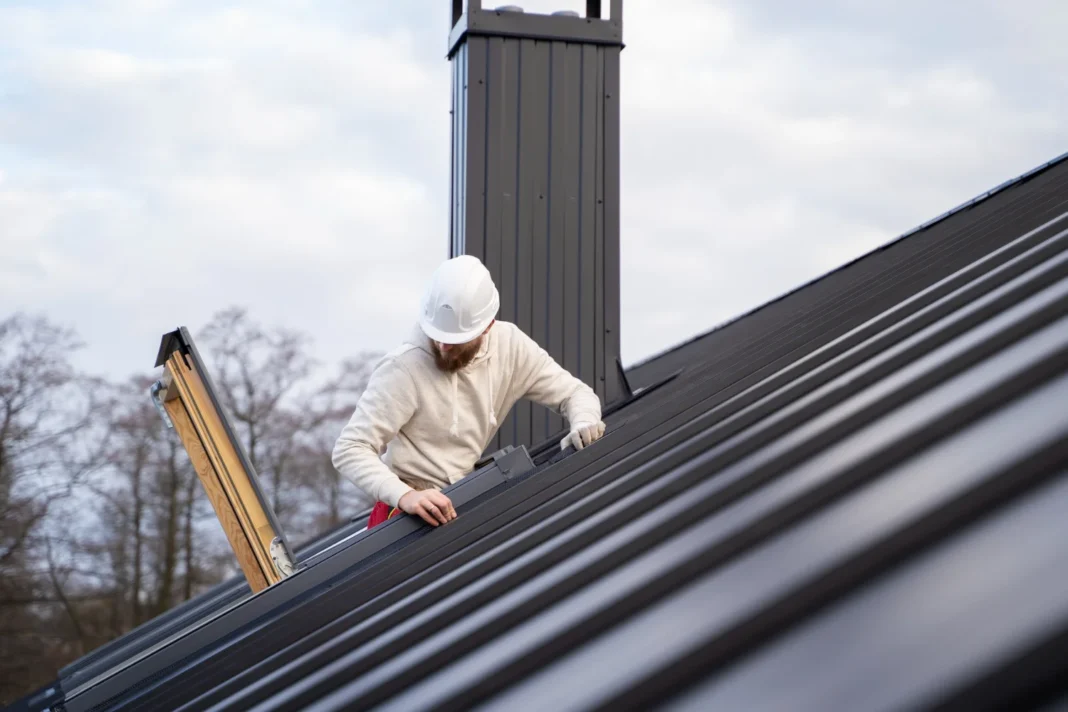A sound roof over your head is more than just a figure of speech; it’s a fundamental necessity for the safety and comfort of your home. However, the pivotal role of proper roofing, particularly the aspect of flashing, often goes unnoticed until troublesome leaks appear. Flashing, the unsung hero of roof integrity, is critical in diverting water away and preventing it from infiltrating the structure of your home.
We’ll explore its functions, the common mistakes to avoid during installation, and practical tips to ensure your roof remains resilient against the elements, safeguarding your home for years. Whether you’re a homeowner, an aspiring DIYer, or a professional in the field, understanding the nuances of proper flashing installation is key to maintaining a watertight roof.
Defining Flashing and Its Role in Watertight Roofing
Flashing is a protective barrier between the joints and angles of your roof, such as where the roof meets a wall or chimney. Its main purpose is to prevent water from penetrating these vulnerable areas and causing damage to your home’s interior. A good flashing system should be impermeable, durable, and withstand harsh weather conditions.
One of the most common mistakes in flashing installation is improper sizing and placement. Flashing should extend at least 4 inches past the joint or angle it protects, with an additional inch for every 10 degrees of slope. This ensures proper coverage and prevents water from seeping through any gaps.
Watertight Roof Installation: Important Factors to Consider
Ensuring a roof remains watertight is paramount for the longevity of your home. Beyond the precision in flashing installation, several other factors contribute significantly to a roof’s ability to repel water and protect your dwelling. From selecting the right materials to the roof’s slope, understanding these elements can be the difference between a robust, enduring roof and one that succumbs to the elements.
Material Selection
Choosing the correct materials for your roof and its flashing is crucial. Materials should match the aesthetic appeal of your home and offer the durability to stand against your local climate. Metals like copper and aluminum are popular for flashing due to their longevity and resistance to corrosion.
Slope of the Roof
The slope or pitch of your roof plays a vital role in water drainage. Roofs with inadequate slopes do not efficiently direct water away, leading to pooling and eventual leaks. Designing a roof with a slope complements your home’s architecture while facilitating effective water runoff is essential.
Quality of Installation
Even the best materials can only succeed if installed correctly. The quality of workmanship during the installation process is a critical factor in ensuring a watertight roof. It requires skilled professionals who understand the intricacies of roofing systems and follow best practices meticulously. Contact a roofing expert to ensure your flashing is installed correctly and protects your home from water infiltration.
Regular Maintenance
A well-maintained roof is more likely to stay watertight over the years. Regular inspections can identify and rectify minor issues before they escalate into major problems, such as leaks or structural damage. Maintenance includes cleaning gutters, inspecting for damage, and ensuring flashing remains sealed and intact.
Proper Ventilation
Adequate ventilation is often overlooked but is essential in preventing moisture buildup under the roof. This buildup can cause rot and mold, compromising the roof’s structure and your home’s health. A balanced ventilation system allows for a continuous flow of air, keeping the underside of the roof dry.
Final Thoughts
Flashing is a crucial component of a watertight roof, and its proper installation is vital for the safety and longevity of your home. Along with quality materials, proper slope, and regular maintenance, understanding the role of flashing in roofing systems can help you make informed decisions regarding protecting your home from water infiltration. Remember to consult professionals for major roofing projects and conduct regular inspections to keep your roof in top shape.


